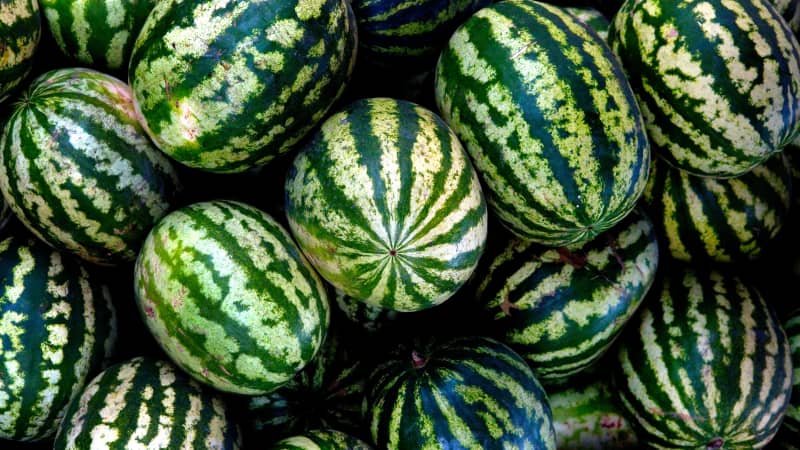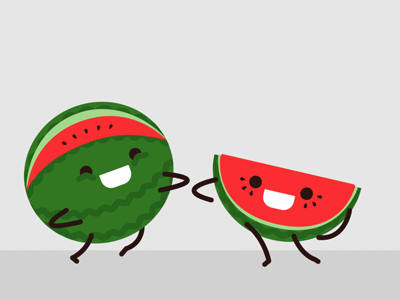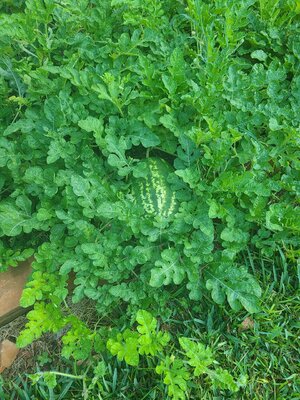- Joined
- Apr 30, 2005
- Messages
- 34,006
From ATK and Cooks Illustrated.
By Liz Bomze
Published Aug. 22, 2022

Have you ever stood at a bin full of watermelons, watching fellow shoppers hoist the lumbersome fruits up and down, inspect them all over, and rap on the smooth green surface with an ear to the rind—and wonder what exactly they’re looking for?
Me, too. Because I’ve never been clear on what a good one should feel, look, or sound like—or if any of those factors even matter.
Fed up with the roll-of-the-dice experience, I reached out to Trevor Suslow, professor emeritus of cooperative extension and applied research in the plant sciences department at University of California, Davis, for his take on which methods can reliably help identify a watermelon that’s deeply, florally sweet with dense, crisp, juice-gushing flesh.
How to Pick a Great Watermelon
An agricultural-school melon expert weighs in on the tips that really work.By Liz Bomze
Published Aug. 22, 2022

Have you ever stood at a bin full of watermelons, watching fellow shoppers hoist the lumbersome fruits up and down, inspect them all over, and rap on the smooth green surface with an ear to the rind—and wonder what exactly they’re looking for?
Me, too. Because I’ve never been clear on what a good one should feel, look, or sound like—or if any of those factors even matter.
Fed up with the roll-of-the-dice experience, I reached out to Trevor Suslow, professor emeritus of cooperative extension and applied research in the plant sciences department at University of California, Davis, for his take on which methods can reliably help identify a watermelon that’s deeply, florally sweet with dense, crisp, juice-gushing flesh.
Many of the clues to ripeness “are good hints,” he said of common tactics like judging if the fruit is heavy for its size, “but tricky to use for most people.” He also said some are simply not true.
Here are the few clues Suslow uses to identify a ripe watermelon. He doesn’t guarantee that you’ll get it right every time; assessing these variables is subjective and identifying “that good eating point,” as Suslow calls it, between under- and overripe is tricky. But he estimates that he gets a good one 80 to 85 percent of the time.
How to Tell If a Watermelon Is Ripe: Three Indicators
1. Yellow Belly
As watermelons grow, the side of the fruit that sits on the ground sometimes develops a patch that isn’t green or striped like the rest of the rind. The color of this ground spot, or field spot, can be a good indicator of ripeness.
“If it has a yellow belly—one that is fairly yellow and definitely not still vanilla cream white—that’s when you know it’s right,” Suslow said, explaining that the spot’s color develops more pigment as the fruit matures.
He also noted that a dark yellow ground spot can indicate overripeness. If you suspect that and want to double check, push on the melon’s blossom end and feel around for tender spots.
“If there’s any give there, or anywhere in the rind,” Suslow said, “move on to the next melon.”
2. Good Vibrations
According to Suslow, rapping or “knuckle knocking” on a melon really can be helpful to assess the water—a measure of its maturity—if you do it right and know what to look for. His advice:
- Hold the melon in the palm of one hand. (Note: This method is only effective if you’re able to pick up and hold the melon in one hand.)
- Using the knuckle of your other hand, knock on the side of the melon opposite your open palm.
- In a ripe melon, he said, “you can hear and sort of feel the vibration—a resounding, reverberating knock—transferring through to the palm of your hand.”
- In an unripe melon, you’ll hear a crack sound but feel no vibration.
- In an overripe melon, you’ll hear a thud and feel no vibration.
3. Dull Skin
As watermelons grow, their rind develops a natural wax coating that seals it from the elements and preserves the water content of the flesh after harvest. This wax gives the rind a dull, matte appearance, which is a good indication that the melon has matured.
“Some people think that a bright and shiny melon is a good one,” Suslow said. “But if it’s a little bit dull, that’s actually a good indicator for ripeness that’s associated with high sugar and a high flavor profile.”
How to Store Watermelon
Everyone loves ice-cold watermelon, and chilling the fruit before serving it makes for the ideal eating experience. But Suslow warns that it’s important to minimize the fruit’s time in the fridge because watermelon (like other members of the cucumber family) is prone to chilling injury: tissue breakdown caused by low temperatures that results in soft, mushy, watery patches in the flesh.
Here’s his storage advice for whole watermelons (cut fruit should always be refrigerated).
- Up to a day or two before cutting: Refrigerate
- Up to 7 days: Store at room temperature, where the rind’s wax coating will keep the fruit perfectly fresh and juicy.
“Honeydew and watermelon are pretty shelf stable for that period of time,” said Suslow. “If you put them in the refrigerator for several days, they're going to start to fall apart inside and you'll think it was what happened when you bought it.”
How Long Does Cut Watermelon Last?
Suslow said the refrigerated shelf life of cut watermelon will vary depending on the condition of the fruit, but offers the following guidelines for a well-ripened specimens:
- Large, well-wrapped sections: 4 to 6 days
- Small pieces or wedges: 2 to 3 days
“Beyond that,” he said, “the flavor goes quickly and the fruit becomes water-soaked and translucent, and loses most of its texture quality.”
Last edited:





300x240.png)